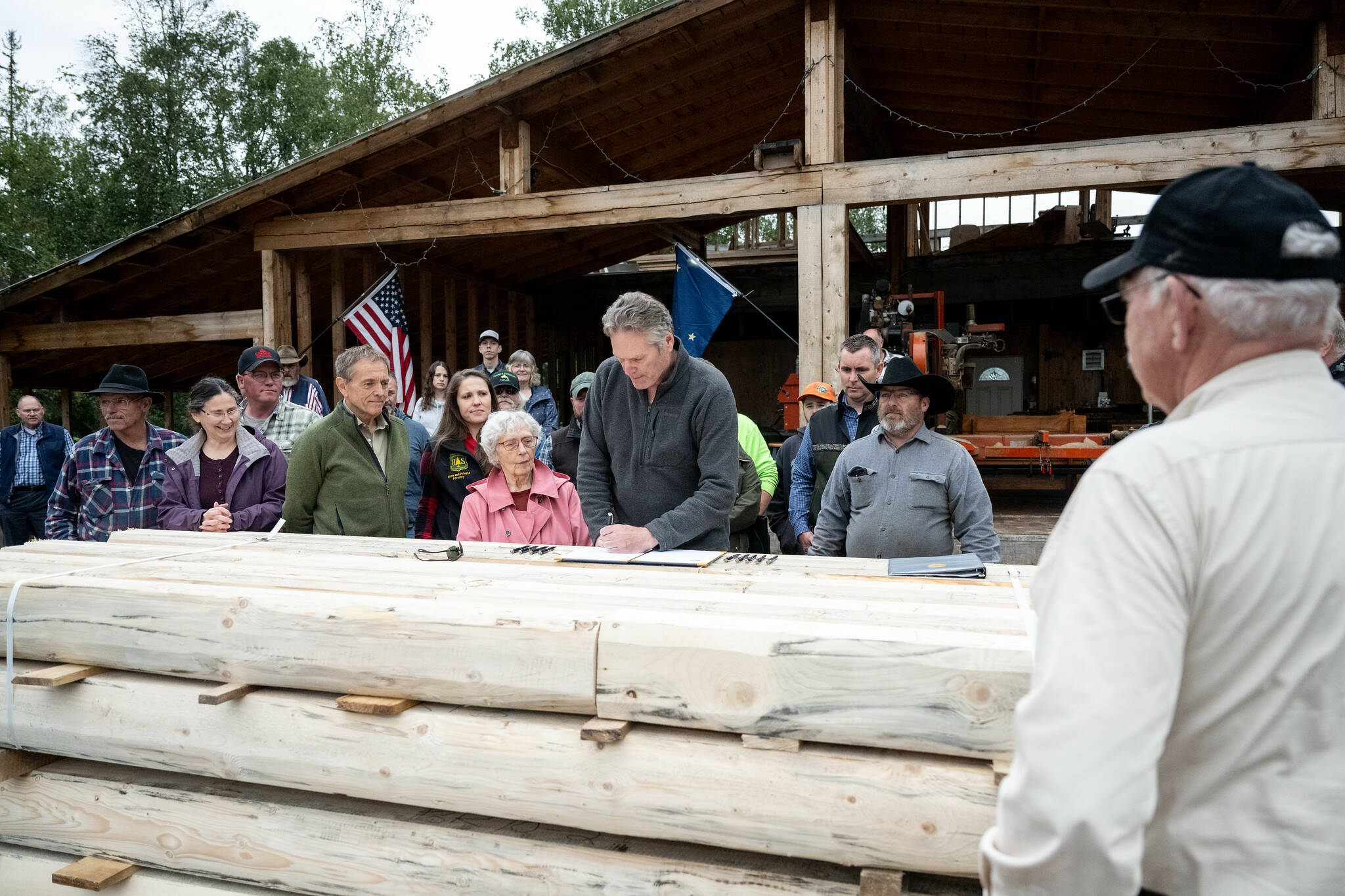It’s about to get easier for Alaska’s mill operators to grade their own lumber.
That’s following Gov. Mike Dunleavy’s signing of S.B. 87 on Wednesday, which establishes a free, one-day lumber grade training program through the Alaska Division of Forestry that will train mill operators to grade lumber.
At Papoose Milling in Big Lake, Dunleavy, bracing the bill on a pile of wood, signed the legislation — sponsored by Sen. Jesse Bjorkman, R-Nikiski — into law. The bill passed in both chambers of the Alaska Legislature in May with broad bipartisan support.
“Creating new opportunities for lumber sales through the local lumber grading program can serve as a catalyst to help grow Alaska’s timber sector by lowering the barrier of entry for new sawmills,” Bjorkman is quoted as saying in a press release distributed Wednesday.
Issuance of grading certificates to people who complete the program or who already meet the qualifications outlined in the bill, the release says, can help remove barriers for small sawmills in Alaska. The one-day program will be offered at least once per year with the content, instruction qualifications and completion requirements determined by the division.
Successful completion of the state program established in the bill will allow participants to receive a grading certificate that would be good for five years. The bill also allows the Alaska Division of Forestry to give certificates to people who either hold a current certification from an accredited grading agency or have a bachelor’s or postgraduate degree in forest products or equivalent degree.
Load-bearing dimensional lumber graded and certified as described by the bill can be used for one-, two- and three-family dwellings in Alaska. The bill requires that lumber be milled in a way that meets or exceeds the requirements of the applicable building code for the type of dwelling being built.
People who hold the kind of certificate made available in the bill can only grade lumber that they’ve milled and, if used to build dwellings, must sell directly to the building contractor, the owner of the dwelling or a person acting on behalf of either. Local inspectors authorized to examine a dwelling may restrict or reject the use of such lumber.
Dunleavy’s office in a press release touted the grading program as one that will help reduce Alaska’s dependence on lumber imported from Canada and the Lower 48 and help sawmills get lumber to market.
“In Alaska, many sawmills do not produce enough lumber to justify the cost of membership in a lumber grading agency accredited by the American Lumber Standards Committee,” the release says. “As a result, most dimensional lumber in Alaska is imported from the Pacific Northwest and Canada where stamped lumber is produced.”
More information about S.B. 87 can be found on the bill page at akleg.gov.
Reach reporter Ashlyn O’Hara at ashlyn.ohara@peninsulaclarion.com.

